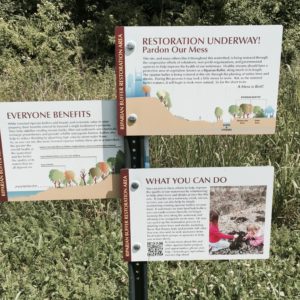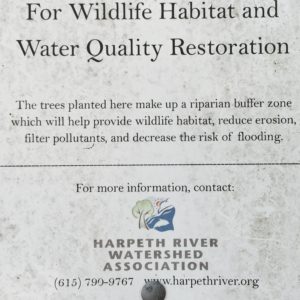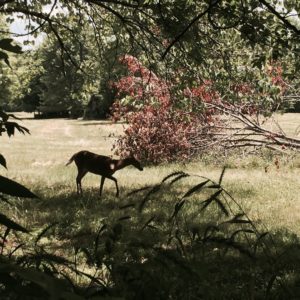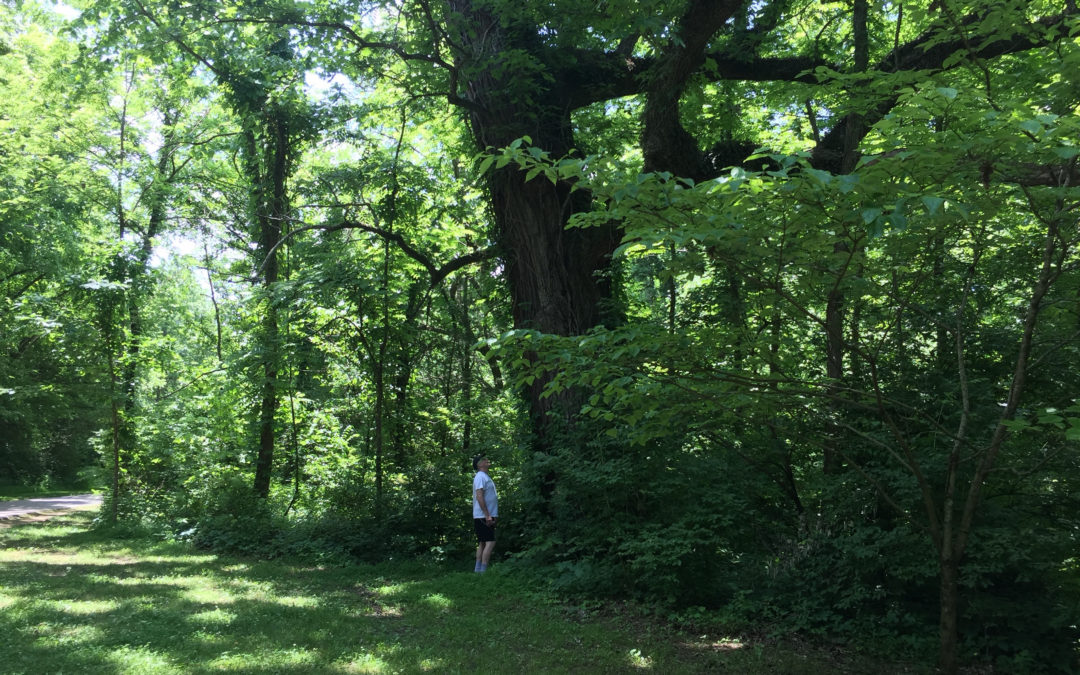My husband had heard about a new park, with a paved path, not far from where we live. We had spent one Saturday morning searching for it in an area behind a nearby neighborhood where we thought it was located, to no avail. Finally, last week, Eric asked the coworker, who had originally told him about the new Metro Nashville Park, to give him the specific directions to its location; and last Saturday, on a comfortable cloudy day, we had the opportunity to explore the park.
 As we approached the trail, we noticed right away three signs directly in front of us, at the junction point of the path. Curious, we stopped to read the signs. Right away, I noticed a word on one of the signs which seemed to pop from the text. . . Riparian. (I feel sure I’ve seen this word before but I honestly don’t recall having ever seen it.) I asked Eric if he knew what the word meant. He guessed its meaning based upon the context of the sign, but he too wasn’t familiar with the word. Intrigued, I wanted to find out.
As we approached the trail, we noticed right away three signs directly in front of us, at the junction point of the path. Curious, we stopped to read the signs. Right away, I noticed a word on one of the signs which seemed to pop from the text. . . Riparian. (I feel sure I’ve seen this word before but I honestly don’t recall having ever seen it.) I asked Eric if he knew what the word meant. He guessed its meaning based upon the context of the sign, but he too wasn’t familiar with the word. Intrigued, I wanted to find out.
Thankful to have my phone with me, I quickly asked Siri, “What does the word riparian mean?” In less than a second, I heard the answer and saw it on the screen of my phone, from the on-line Dictionary:
“Riparian means of, relating to, or situated on the banks of a river.”
As I read further, I discovered it can also mean “of or relating to wetlands adjacent to rivers and streams.”
Eric and I read the details of these three signs and as we walked along the riparian zone, I researched. (I couldn’t help but think my Daddy would be proud of me. Ha!)
As one of the 15 terrestrial biomes of the earth, according to Wikipedia, a riparian zone serves many purposes including:
soil stabilization, restoration, and protecting aquatic environments from excessive sedimentation, polluted surface runoff, and erosion.
These zones act as a “sacrificial erosion buffer” to absorb the impacts of encroaching urbanization. The various plants which grow in these areas are typically emergent aquatic plants or herbs, trees and shrubs that thrive in the banks close to the water.
The Riparian zones provide shelter, food and shade for wildlife. A plan has been implemented to help restore these areas around the world called the “Biodiversity Action Plan” or implementation of a “Plant or Vegetation Waste Buffer.”
 On Sunday, Eric and I walked on another path behind the Brentwood YMCA. Again, we saw a sign, and you guessed it, the sign described a Riparian Zone.
On Sunday, Eric and I walked on another path behind the Brentwood YMCA. Again, we saw a sign, and you guessed it, the sign described a Riparian Zone.
At church, that night, our pastor’s message was on the recreative work of God in our lives, focusing on Genesis 1, especially verse 12, And the earth brought forth grass, the herb that yields seed according to its kind, and the tree that yields fruit, whose seed is in itself, according to its kind. And God saw that it was good. He shared how when we become born-again in Christ we receive His seed and truly are a new creation. We go through a restorative process in our soul.
This week I have discovered there are at least forty-six Scriptures about plants or being planted next to water. There are many more verses about the living water. These words speak volumes to me:
For as the earth brings forth its bud,
As the garden causes the things that are sown in it to spring forth,
So the Lord GOD will cause righteousness and praise to spring forth before all the nations.
(Isaiah 61:11, NKJV)

He shall be like a tree
Planted by the rivers of water,
That brings forth its fruit in its season,
Whose leaf also shall not wither;
And whatever he does shall prosper.
(Psalm 1:3, NKJV))
As the deer pants for the water brooks,
So pants my soul for You, O God.
(Psalm 42:1)
I have titled this post, Riparian Zone or “Repairian” Zone, realizing how God is in the repairing work. He loves us so much! He loves us from the beginning when we are full of “weeds” but over time he creates us to be trees of righteousness when we trust in Him.
I am amazed how God speaks to me through nature and through His words about nature.
How has He spoken to you?

